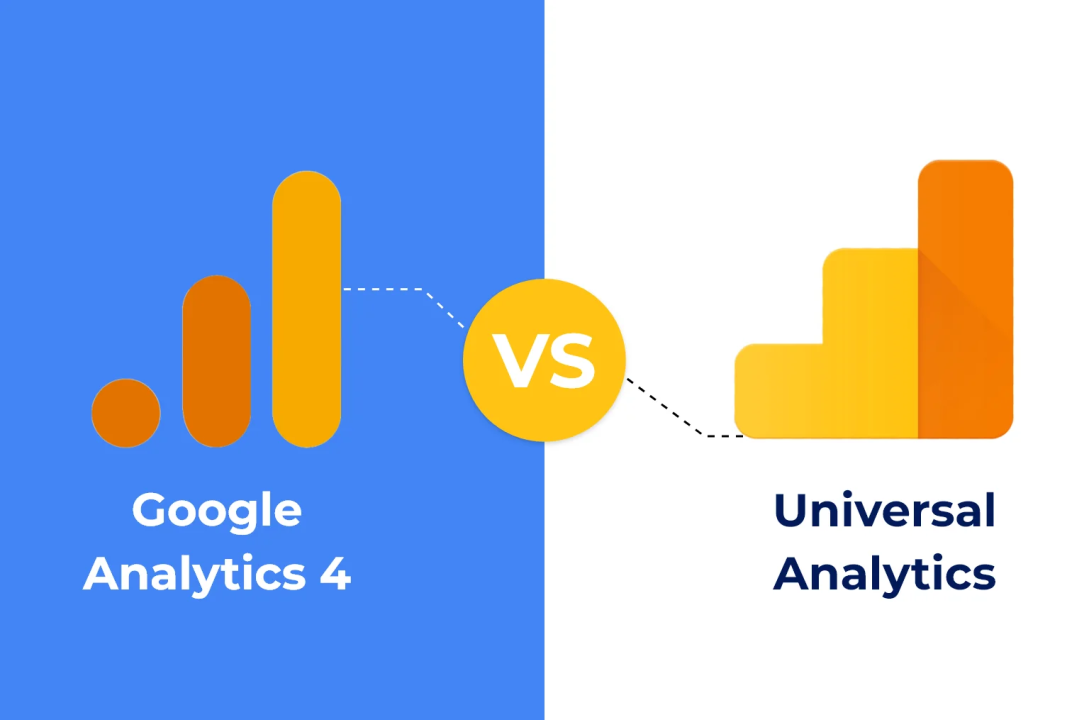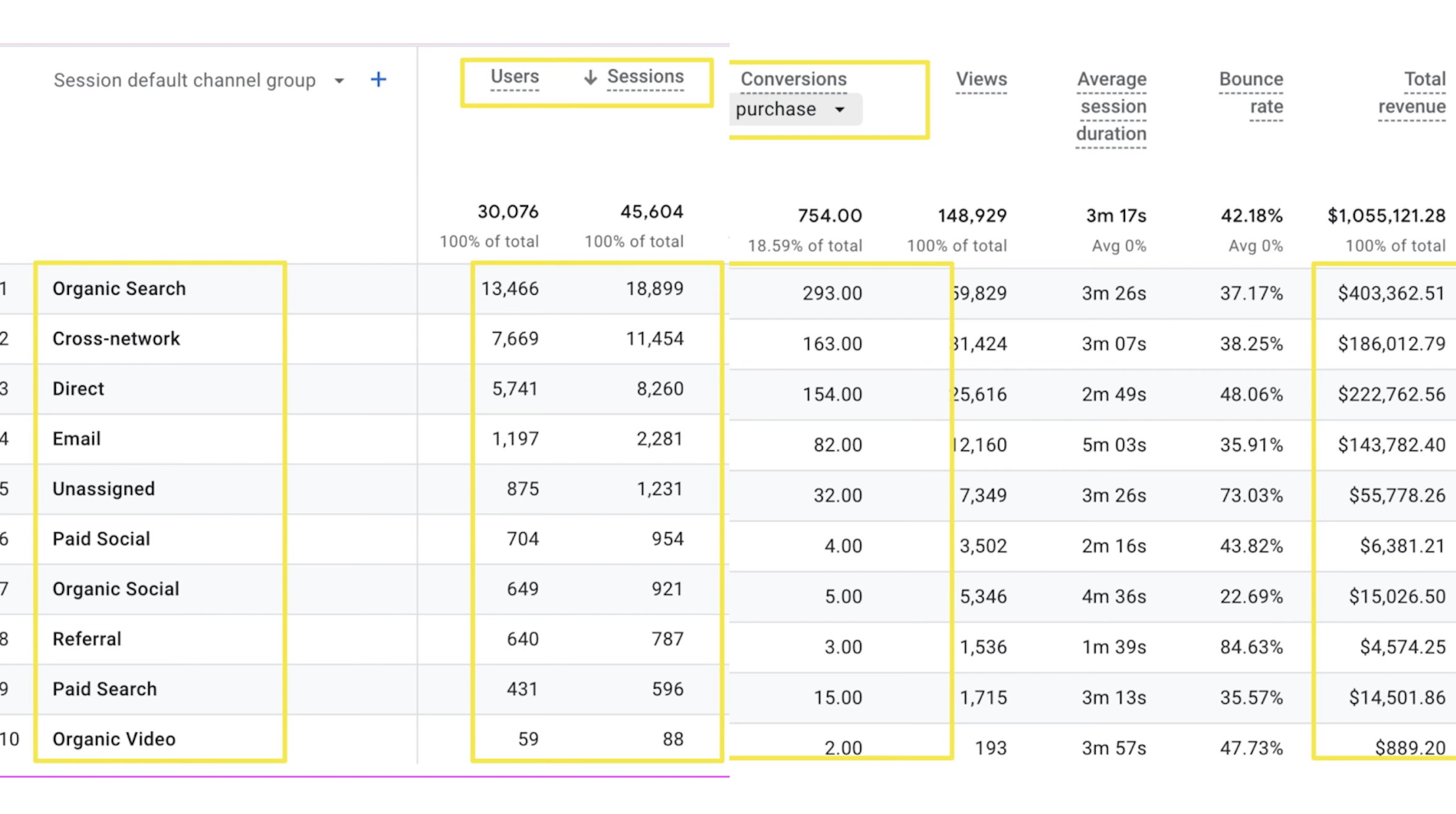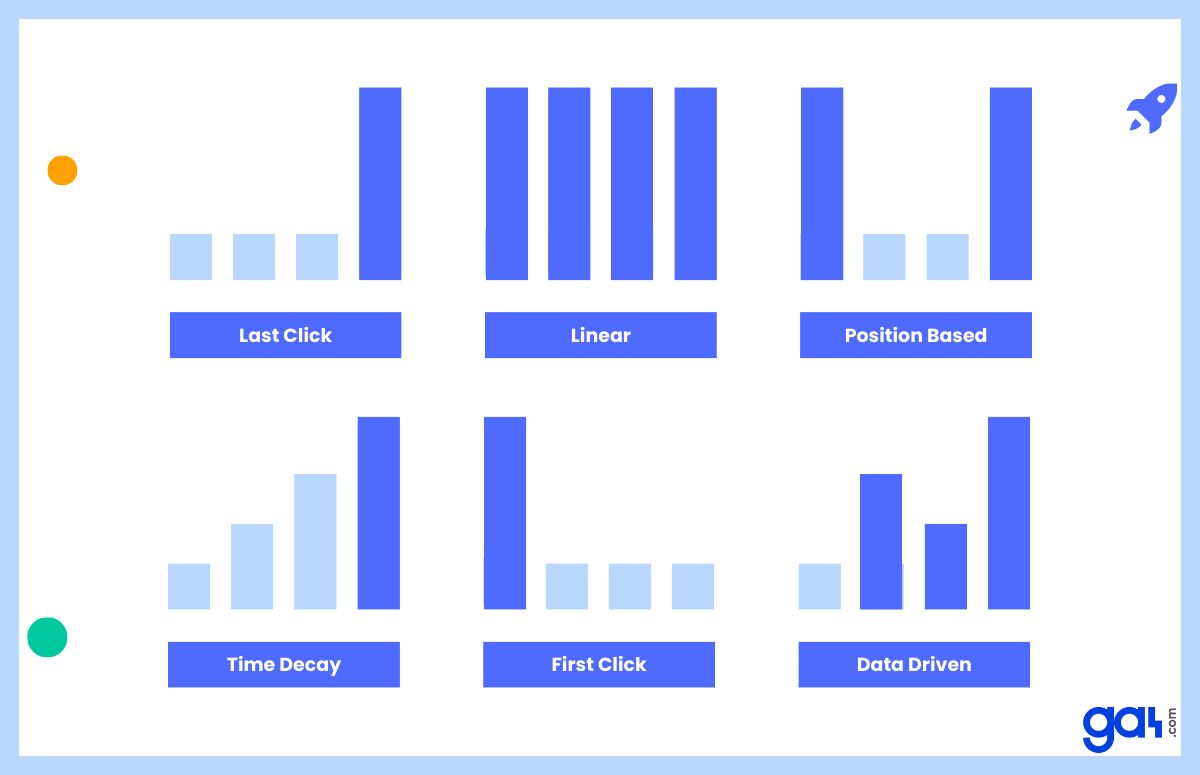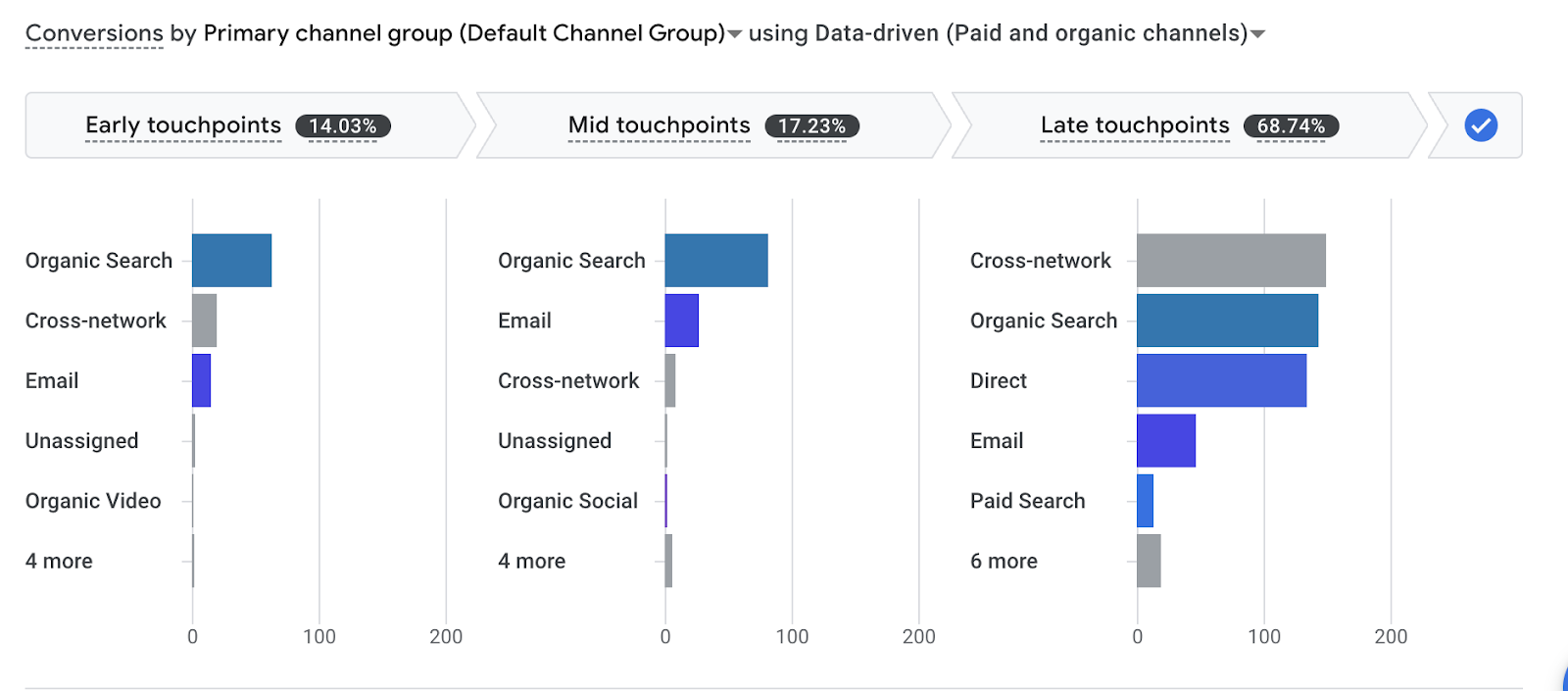
1. Driving E-commerce Success: Leveraging GA4 to Optimize Your Channel
Many business owners face the challenge of investing resources in marketing channels that yield little results. To address this, it's important to analyze where your audience is and how they engage with your website.
Boutir Strategic Channel Prioritization: Which Marketing Channels Should You Prioritize?
Google Analytics offers insights into the origins of your website users. The Acquisition reports detail the various marketing channels driving traffic, such as organic search, social media referrals, and more. By analyzing these reports, you can assess the effectiveness of specific campaigns and adjust your budget accordingly. Additionally, you can use the data to inform future budget allocations, pinpointing successful campaigns and traffic sources.
Here, we observe that the primary traffic source for this e-commerce business is organic search, accounting for 41.27% of its overall traffic. Additionally, cross-network traffic from Google Ads contributes significantly, representing 25.63% of its total organic traffic.
Certainly, we cannot solely depend on session data to optimize our business's traffic strategy. In this example, it's evident that while traffic from email campaigns constitutes only 4.88% of the total traffic, it generates a significant portion, accounting for 13.58% of the total revenue. Conversely, Google Ads contribute a mere 18.00% to the total revenue despite their larger share of traffic.
Based on the analysis of GA4 reports and our client's specific circumstances, we have identified key areas for optimization. While maintaining steady organic traffic growth, it's crucial to focus on enhancing subscription rates and conversions. Additionally, optimizing Email marketing, and effective segmentation of customers is paramount.
Deciphering Attribution: How Does Cross-Channel Attribution Work and Why Does It Matter?
Does it seem reasonable to solely credit the last ad a user sees before making a purchase, considering that the average buyer conducts multiple searches and views numerous ads beforehand?

Common sense suggests otherwise. It's evident that all ads a user views contribute to guiding them through the conversion funnel. Advertisers globally seek to measure and optimize spending across marketing channels. This is challenging due to customers interacting with multiple touchpoints before conversions. Attribution is key in addressing this challenge.
For example, suppose you run an online store that sells lights. Here’s a sample conversion path:
A user performs a Google organic search about ‘the top 10 floor lamps’ and clicks on your blog post about it.
Returns to your blog the next day and visits your IG social media after clicking a link on your blog.
3 days later, the user visits your Facebook ads and buys a lamp.
In this case, this conversion path consists of 3 sources/potential steps to get credits for the conversion:
1. Organic search
2. The IG post
3. The Meta ads
Or, all three since they all contribute to the conversion process in some way. In this case, you need details about attribution models to get a better picture of how this conversion occurs as every GA4 attribution model will provide you with a different perspective.
 Mastering attribution and attribution models in GA4 enables you to effectively assign credit to various touchpoints along the customer journey. This allows you to accurately assess the impact of each marketing channel and optimize your strategies accordingly.
Mastering attribution and attribution models in GA4 enables you to effectively assign credit to various touchpoints along the customer journey. This allows you to accurately assess the impact of each marketing channel and optimize your strategies accordingly.
2. Understanding Your Audience: Targeting with Precision
E-commerce businesses aim to attract potential customers by developing strategic marketing approaches tailored to their products and services. This involves thorough analysis of various factors including geographical location, demographic information, purchasing behaviors, and more, in order to construct detailed user personas.
Segmentation Strategies: How Can You Segment Your Customers and Users Effectively?
Segmenting customers enables businesses to employ personalized messaging tailored to specific groups, resulting in more impactful outcomes compared to a generic approach. In the overview above, we obtain a comprehensive insight into user profiles, facilitating the optimization of marketing strategies from diverse angles.
Regarding age, we can segment user groups more precisely, analyzing their purchasing behavior and engagement levels, which is advantageous for customer segmentation.
Specifically, revenue from customers over 25 years old comprises 20% of total revenue. Consequently, we can tailor various reports to showcase their preferred products, marketing channels, engagement rates, and loyalty, enabling us to segment our marketing strategies accordingly.
Leveraging User Tech Reports: How to Use User Tech Reports to Understand Your Audience Better?
Understanding your audience's technological preferences, including browser, device type, device category, device model, screen resolution, platform, operating system, and more, is crucial for optimizing user experience.
For example, device category data aids in design efforts, here, mobile conversions account for 74% of the total conversions, while mobile revenue constitutes 66% of the total revenue. This underscores the necessity for this business to prioritize mobile-friendly design and functionality to cater to the preferences and behaviors of our customer base. So that we can enhance user experience, boost traffic and engagement, improve search engine rankings, and ultimately increase conversions and revenue.
3. Crafting Conversion-Focused Content: Strategies for Success
Identifying top-performing assets/content, particularly successful SEO efforts, is vital. Metrics like clicks on the subscribe button, time on page, bounce rate, and unique page views can be defined as custom events in GA4 for tracking.
Noteworthy changes include alterations in dashboard layouts and shifts in metrics and terminology. Ultimately, these changes are driven by a shift in analytics methodology from session-based hit types, such as page hits and event hits, to an "event-based" approach. Even more, you can customize your event to track unique behaviors.
GA4 automatically collects a wide range of events for you. In other words, GA4 has a built-in feature that automatically keeps track of specific events without you needing to do anything extra.
Inspiring Product Ideation: How to Identify High-Opportunity Product
The monetization report in GA4 displays revenue generated from e-commerce, subscriptions, and advertisements, providing insights into revenue sources and areas for improvement.
In this report, we can observe the sales performance of product categories classified within our inventory. Assess the revenue generated by your website and observe user responses to marketing campaigns. Compare metrics such as item views, purchases, purchase-to-view rate, and item purchase quantity to evaluate product performance.
Every brand and merchant will have their own best sellers, but besides these, how do we determine which products have sales potential?
Here we rank and highlight the data of each column, including item views, item purchases, conversion rate, and revenue. This way, we can identify individual products, such as item 27, which may not stand out in views and revenue, but surprisingly has the highest conversion rate. From this analysis, we can consider whether bundling sales to increase AOV and sales would be effective, especially if the product has a lower unit price and insufficient exposure.
Optimizing Landing Page Performance: How Can a Sales-Driven Approach Transform Your Conversions?
Landing pages serve as the entry point to your website. In Google Analytics, they are defined as the pages through which visitors initially enter your site. Essentially, landing pages represent the first interaction users have with your website.
In this example, we can see that in addition to the website homepage, there are several landing pages with high sessions. A high session number suggests that the page is being promoted effectively across various marketing channels and has strong SEO.
Among them, apart from product pages, one blog post stands out with very high traffic but a low conversion rate. This indicates the need to adjust the content or design of this blog page, such as changing images or adding CTAs, to improve its conversion rate.
The Landing Pages report in Google Analytics is a valuable tool for analyzing and improving website performance. It provides insights into visitor behavior and identifies top-performing pages. By leveraging this data, you can optimize content, enhance user experience, and increase conversion rates for a more successful inbound marketing strategy.
Conclusion
Due to the event-based data collection approach of GA4 and its unparalleled advantages, it is hard to find a comprehensive guide that instructs on how to analyze e-commerce business situations using GA4. Many data and conclusions need to be considered in conjunction with the actual operational circumstances of merchants.
This requires e-commerce merchants not only to be well-versed in GA4 operations and their own business conditions but also to flexibly utilize the obtained metrics to conduct specific analyses before providing subsequent actions or strategies. If you would like further consultation on GA4 or need assistance in this area, schedule a FREE consultation with us now!
